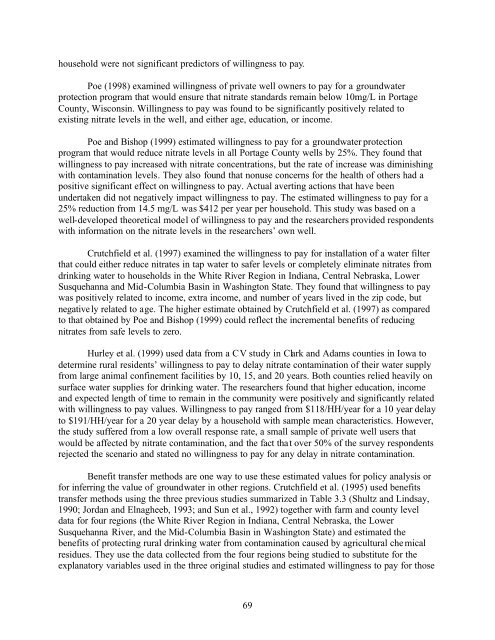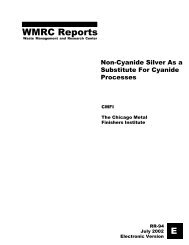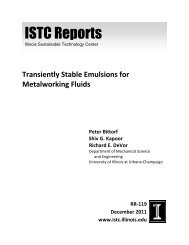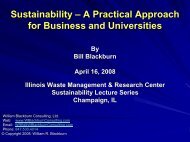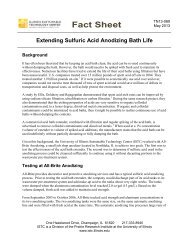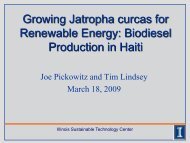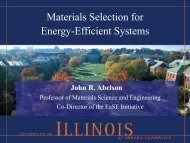Natural Resource Damage Assessment: Methods and Cases
Natural Resource Damage Assessment: Methods and Cases
Natural Resource Damage Assessment: Methods and Cases
You also want an ePaper? Increase the reach of your titles
YUMPU automatically turns print PDFs into web optimized ePapers that Google loves.
household were not significant predictors of willingness to pay.<br />
Poe (1998) examined willingness of private well owners to pay for a groundwater<br />
protection program that would ensure that nitrate st<strong>and</strong>ards remain below 10mg/L in Portage<br />
County, Wisconsin. Willingness to pay was found to be significantly positively related to<br />
existing nitrate levels in the well, <strong>and</strong> either age, education, or income.<br />
Poe <strong>and</strong> Bishop (1999) estimated willingness to pay for a groundwater protection<br />
program that would reduce nitrate levels in all Portage County wells by 25%. They found that<br />
willingness to pay increased with nitrate concentrations, but the rate of increase was diminishing<br />
with contamination levels. They also found that nonuse concerns for the health of others had a<br />
positive significant effect on willingness to pay. Actual averting actions that have been<br />
undertaken did not negatively impact willingness to pay. The estimated willingness to pay for a<br />
25% reduction from 14.5 mg/L was $412 per year per household. This study was based on a<br />
well-developed theoretical model of willingness to pay <strong>and</strong> the researchers provided respondents<br />
with information on the nitrate levels in the researchers’ own well.<br />
Crutchfield et al. (1997) examined the willingness to pay for installation of a water filter<br />
that could either reduce nitrates in tap water to safer levels or completely eliminate nitrates from<br />
drinking water to households in the White River Region in Indiana, Central Nebraska, Lower<br />
Susquehanna <strong>and</strong> Mid-Columbia Basin in Washington State. They found that willingness to pay<br />
was positively related to income, extra income, <strong>and</strong> number of years lived in the zip code, but<br />
negatively related to age. The higher estimate obtained by Crutchfield et al. (1997) as compared<br />
to that obtained by Poe <strong>and</strong> Bishop (1999) could reflect the incremental benefits of reducing<br />
nitrates from safe levels to zero.<br />
Hurley et al. (1999) used data from a CV study in Clark <strong>and</strong> Adams counties in Iowa to<br />
determine rural residents’ willingness to pay to delay nitrate contamination of their water supply<br />
from large animal confinement facilities by 10, 15, <strong>and</strong> 20 years. Both counties relied heavily on<br />
surface water supplies for drinking water. The researchers found that higher education, income<br />
<strong>and</strong> expected length of time to remain in the community were positively <strong>and</strong> significantly related<br />
with willingness to pay values. Willingness to pay ranged from $118/HH/year for a 10 year delay<br />
to $191/HH/year for a 20 year delay by a household with sample mean characteristics. However,<br />
the study suffered from a low overall response rate, a small sample of private well users that<br />
would be affected by nitrate contamination, <strong>and</strong> the fact that over 50% of the survey respondents<br />
rejected the scenario <strong>and</strong> stated no willingness to pay for any delay in nitrate contamination.<br />
Benefit transfer methods are one way to use these estimated values for policy analysis or<br />
for inferring the value of groundwater in other regions. Crutchfield et al. (1995) used benefits<br />
transfer methods using the three previous studies summarized in Table 3.3 (Shultz <strong>and</strong> Lindsay,<br />
1990; Jordan <strong>and</strong> Elnagheeb, 1993; <strong>and</strong> Sun et al., 1992) together with farm <strong>and</strong> county level<br />
data for four regions (the White River Region in Indiana, Central Nebraska, the Lower<br />
Susquehanna River, <strong>and</strong> the Mid-Columbia Basin in Washington State) <strong>and</strong> estimated the<br />
benefits of protecting rural drinking water from contamination caused by agricultural chemical<br />
residues. They use the data collected from the four regions being studied to substitute for the<br />
explanatory variables used in the three original studies <strong>and</strong> estimated willingness to pay for those<br />
69


